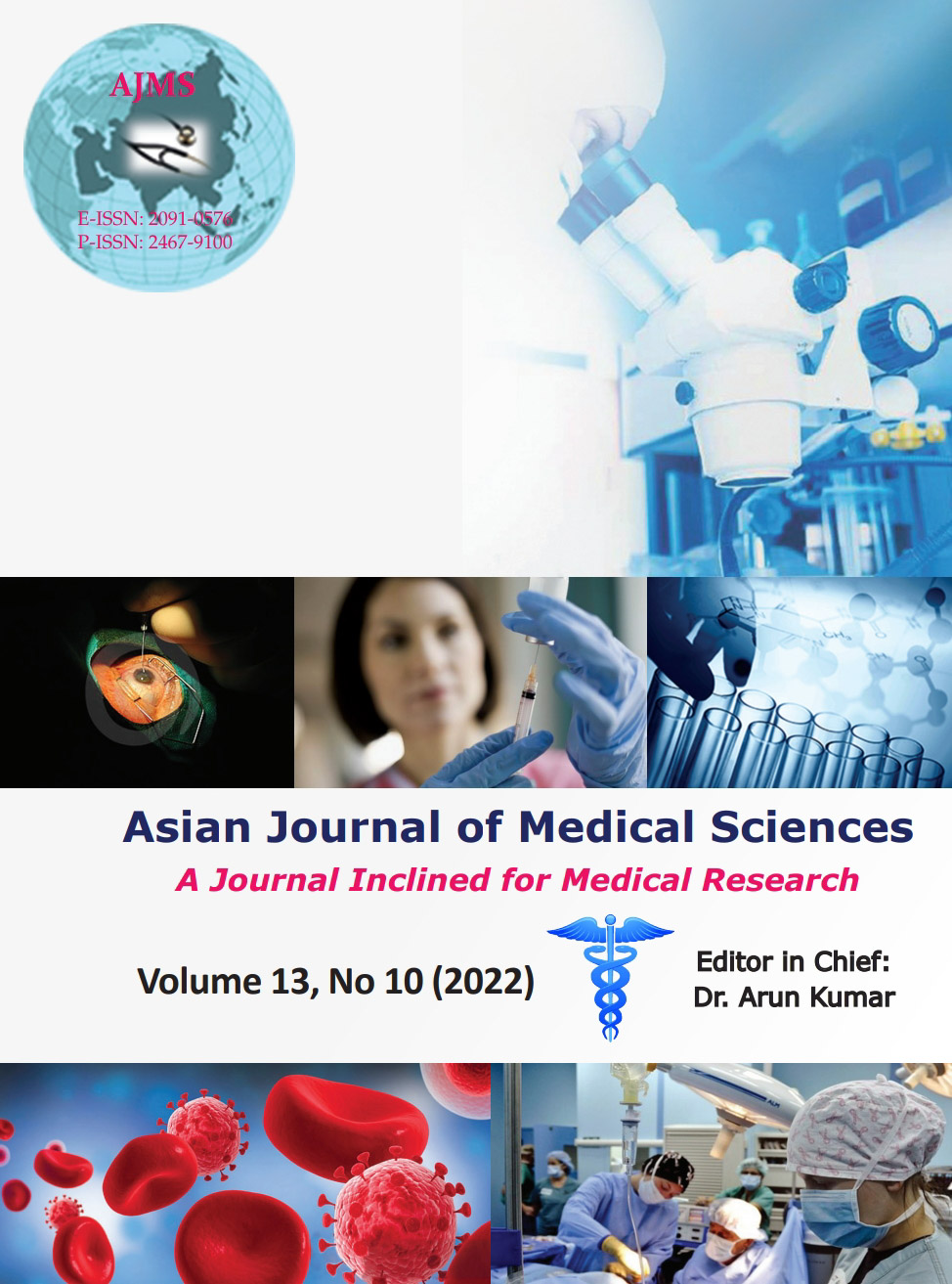Study of anxiety disorders and its association with quality of life in patients of oral cancer
Keywords:
Anxiety; Demographic details; Oral cancer; Quality of lifeAbstract
Background: Anxiety is a response to a threat that is unknown/known, internal/external, vague, or conflictual, cancer is threatening and so many patients are anxious.
Aim and Objectives: The present study was performed to assess the prevalence of anxiety disorders (AD) and quality of life (QoL) and its association in patients of oral cancer.
Materials and Methods: There were 62 patients attending cancer OPD of tertiary care center was assessed for cross-sectional, observational, and questionnaire-based study. Patients those diagnosed with oral cancer were included in our study. They were diagnosed for AD by clinical interview using DSM-5 diagnostic criteria. We assessed QoL in patients with oral cancer by scale of Functional Assessment of Cancer Therapy-Head and Neck (FACT-H&N Version 4). Patients were further assessed for demographic details. Statistical analysis was done using SPSS version 15, proportions were compared using Chi–square test, FACT H&N QoL scores were compared by Mann–Whitney U test. P<0.05 was considered to be statistically significant.
Results: We found that 17.74% had AD and those patients who were diagnosed of AD have poorer QoL in all domains of FACT H&N QoL.
Conclusions: QoL was found to be poor in patients with oral cancer who had diagnosed with AD then those without AD.
Downloads
Downloads
Published
How to Cite
Issue
Section
License
Copyright (c) 2022 Asian Journal of Medical Sciences

This work is licensed under a Creative Commons Attribution-NonCommercial 4.0 International License.
Authors who publish with this journal agree to the following terms:
- The journal holds copyright and publishes the work under a Creative Commons CC-BY-NC license that permits use, distribution and reprduction in any medium, provided the original work is properly cited and is not used for commercial purposes. The journal should be recognised as the original publisher of this work.
- Authors are able to enter into separate, additional contractual arrangements for the non-exclusive distribution of the journal's published version of the work (e.g., post it to an institutional repository or publish it in a book), with an acknowledgement of its initial publication in this journal.
- Authors are permitted and encouraged to post their work online (e.g., in institutional repositories or on their website) prior to and during the submission process, as it can lead to productive exchanges, as well as earlier and greater citation of published work (See The Effect of Open Access).




